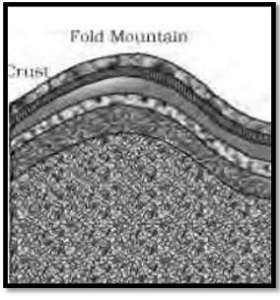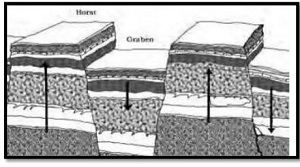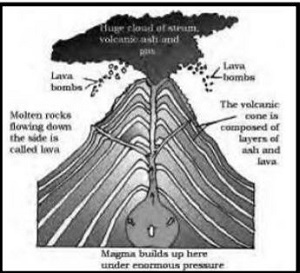Major Landforms of the Earth - Revision Notes
CBSE Class 06 Social Science
Revision Notes
Chapter – 06 Geography
Major Landforms of the Earth
• Within the earth a continuous movement is taking place.This continuous movement results in the formation of different types of landforms.
Land Forms
The landforms are a result of two processes:
(i) The first is internal process which leads to upliftment and sinking of the eath’s surface at several places.
(ii) The second is the external process. It is the continuous wearing down and rebuilding of the land surface. These processes generate by the external agents like-air and water and cause change in the surface of earth.
• The wearing away of the earth’s surface is called erosion.
• The surface is being lowered by the process of erosion and rebuilt by the process of deposition.
• These two processes are carried out by different agents like running water, ice and wind.
Types of Landforms:
• The different landforms depending on elevation and slope are mountains, plateaus and plains.
• Mountains:
(i) A mountain is any natural elevation of the earth’s surface with a peak or a summit.
(ii) In some mountains, there are permanently frozen rivers of ice. They are called glaciers.Some mountains are also found under the sea.
(iii) A continuous chain of mountains over a large area is called ‘Range’.
(iv) The Himalayas, The Alps and The Andes in Asia, Europe and South America respectively are some leading mountains.
(v) There are three types of mountains-Fold mountains, Block mountains and the Volcanic mountains.
(vi) Fold mountains are with rugged relief and high conical peaks. For example Himalayan mountains and Alps, while others with rounded features and low elevation like Ural mountains in Russia and the Appalachians in North America.
(vii) One of the world's oldest fold systems is the Aravali range in India. This range has considerably worn down due to the process of erosion.
(viii) Block mountains are created when large areas are broken and displaced vertically.
(ix) The uplifted blocks are termed as horsts and the lower blocks are caled garben.
(x) Volcanic mountains are formed by volcanic activities. They are formed by the deposition and solidfification of lava.
Advantages of Mountain:
(i) The river valeys and terraces are ideal for cultivation of crops. Mountains possess a rich variety of flora and fauna.
(ii) Mountains have the rich forests cover which provide fuel, fodder, shelter and other products like gum, raisins, etc.
(iii) Mountains attract a number of tourists and hence promote tourism. They visit mountains for their scenic beauty. Various sports like paragliding,hand gliding,river raftingand skiing are popular in the mountains.
• Plateaus:
(i) A plateau is a flat-topped table land. It is an elevated flat land.A plateau may have one or more sides with steep slopes.
(ii) The Deccan plateau in India is one of the oldest plateaus.The height of plateaus varies from few hundred metres to several thousand metres.
(iii) The Tibet plateau is the highest plateau in the world with the height of 4000 to 6000 metres above the mean sea level.
Advantages of Plateaus:
(i) Plateaus are useful as they are rich in mineral deposits, this is the reason behind the locations of many mining areas in plateau regions in the world. The African plateau is famous for gold and diamond mining while Chhotanagpur plateau in India is famous for the deposition of manganese coal and iron.
(iv) Many plateaus have waterfalls.The Hundru falls in the Chhotanagpur plateau on the river Subarnarekha and the Jog fall in Karnatka are examples of such waterfalls.
• Plains:
(i) Plains are low-lying and flat stretches of land.Most of the plains are formed by the deposition by rivers and their tributaries.The rivers carry forward the eroded material and then deposit their load consisting of stones,sand and silt along their courses and in their river valleys.
(ii) Plains may be extremely level, slightly rolling and undulating.
(iii) Some of the largest plains made by the rivers are found in Asia and North America.
Advantages of Plains:
(i) The plains are generally very fertile thus having thick population.
(ii) The large flat areas are available for construction of houses, and productive for cultivation.
(iii) The construction of transport network is easy in these areas because of plain surface.
• Landforms and the People.
(i) Human settlements are dependent upon types of landforms.
(ii) Areas which are dangerous or isolated have less habitation as compared to areas which are calm or rich in minerals.
(iii) Leading a life is much tougher in mountain regions than in plains. We can easily grow crops,build houses or a road in the plains than the mountains.
(iv) Usually we use the land in a wasteful manner,for example constructing houses on a fertile land.
(v) We should avoid using such important gifts of nature in a careless manner.



